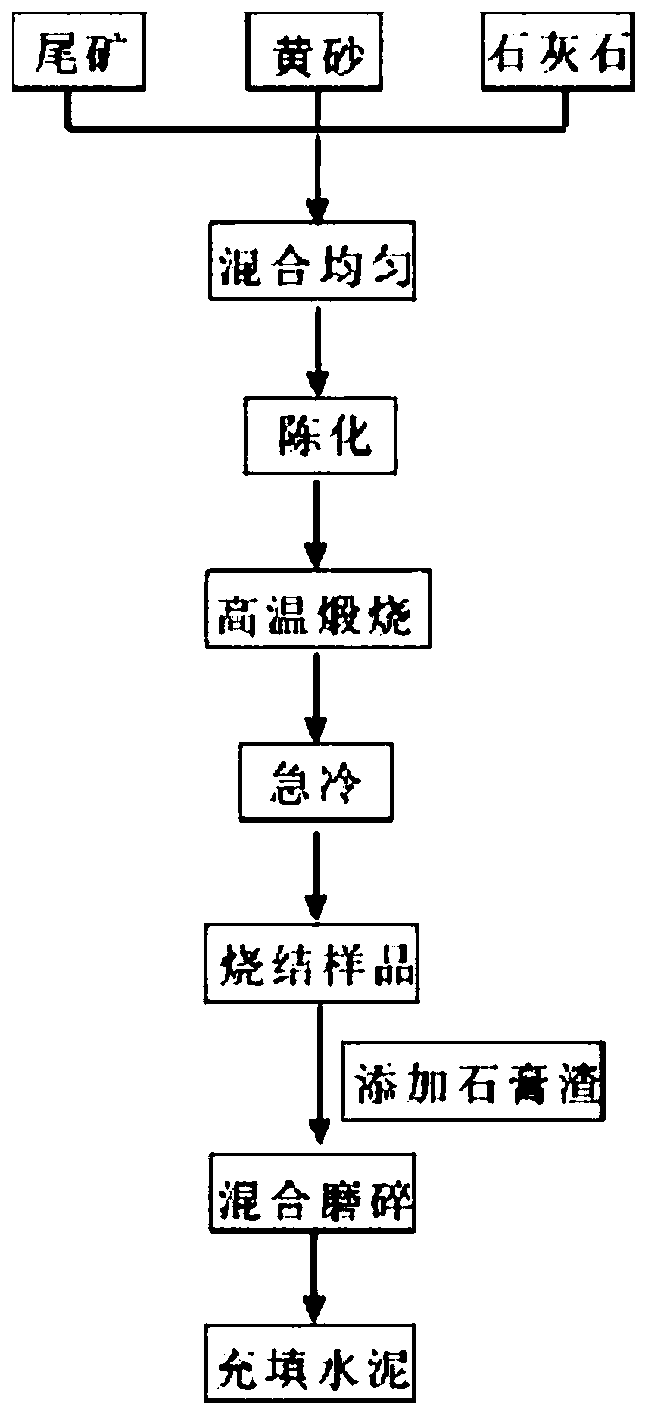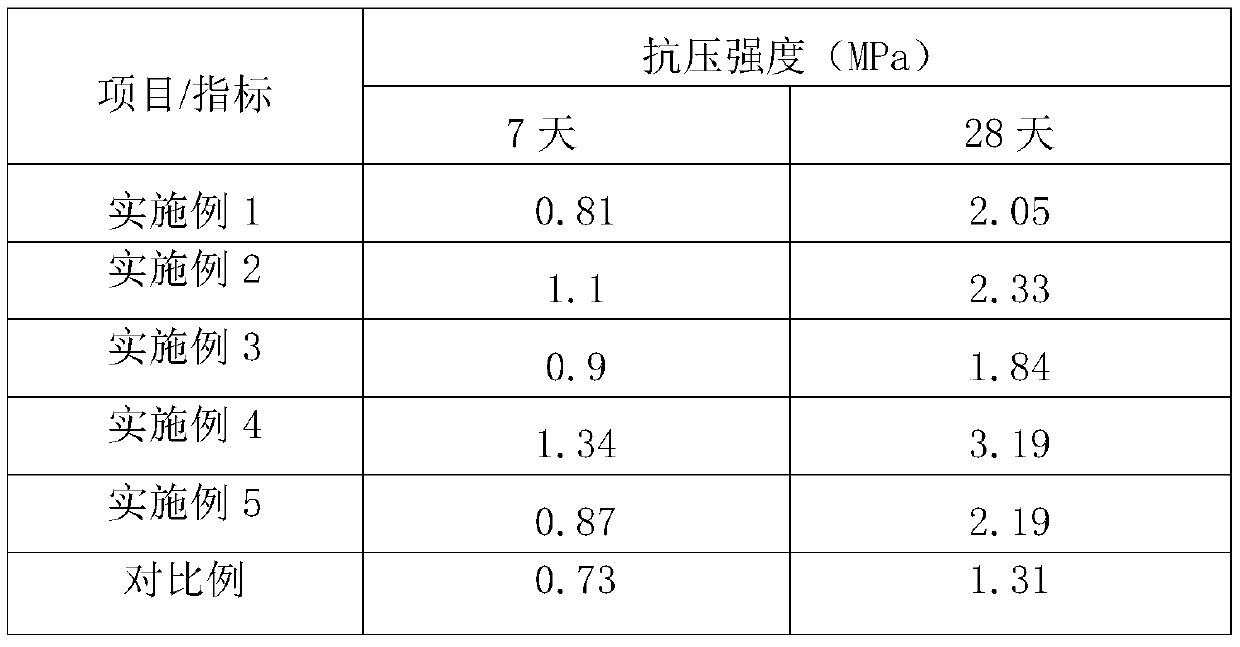Method for preparing early-strength filling cement from mine tailings
A mine tailings and early-strength technology, applied in cement production, etc., can solve the problems of low compressive strength, limited application range, and no experimental cases, etc., and achieve the effect of reducing filling costs
- Summary
- Abstract
- Description
- Claims
- Application Information
AI Technical Summary
Problems solved by technology
Method used
Image
Examples
Embodiment 1
[0031] The weight-to-number ratios of raw materials for filling cement preparation provided in this example are: 244 parts of tailings, 10 parts of river sand, and 746 parts of limestone.
[0032] Step 1: Grind tailings, river sand and limestone to below 200 mesh respectively;
[0033] Step 2: Weigh each raw material component according to the raw material ratio, mix and stir evenly, use a tablet press to press the mixture into a test cake, dry it at 105°C for 12 hours, and set it aside;
[0034] Step 3: Put the prepared test cake into a high-temperature furnace, raise the temperature to 1350°C, keep it warm for 150 minutes, cool it rapidly to room temperature, and then add 5% gypsum to mix and grind until the specific surface area is 370m 2 / Kg, to obtain filling cement products;
[0035] Step 4: Weigh the prepared filling cement and the tailing sand used for downhole filling according to the mass ratio of 1:10, and prepare a test block with a filling concentration of 74%, a...
Embodiment 2
[0037] The weight-to-number ratios of raw materials for filling cement preparation provided in this example are: 248 parts of tailings, 10 parts of river sand, and 743 parts of limestone.
[0038] Step 1: Grind tailings, river sand and limestone to below 200 mesh respectively;
[0039] Step 2: Weigh each raw material component according to the raw material ratio, mix and stir evenly, use a tablet press to press the mixture into a test cake, dry it at 105°C for 12 hours, and set it aside;
[0040] Step 3: Put the prepared test cake into a high-temperature furnace, raise the temperature to 1350°C, keep it warm for 120 minutes, cool it rapidly to room temperature, and then add 5% gypsum to mix and grind until the specific surface area is 370m 2 / Kg, to obtain filling cement products;
[0041] Step 4: Weigh the prepared filling cement and the tailing sand used for downhole filling according to the mass ratio of 1:10, and prepare a test block with a filling concentration of 74%, and...
Embodiment 3
[0043] The weight-to-number ratios of raw materials for filling cement preparation provided in this example are: 243 parts of tailings, 18 parts of river sand, and 739 parts of limestone.
[0044] Step 1: Grind tailings, river sand and limestone to below 200 mesh respectively;
[0045] Step 2: Weigh each raw material component according to the raw material ratio, mix and stir evenly, use a tablet press to press the mixture into a test cake, dry it at 105°C for 12 hours, and set it aside;
[0046] Step 3: Put the prepared test cake into a high-temperature furnace, raise the temperature to 1350°C, keep it warm for 120 minutes, cool it rapidly to room temperature, and then add 5% gypsum to mix and grind until the specific surface area is 370m 2 / Kg, to obtain filling cement products;
[0047] Step 4: Weigh the prepared filling cement and the tailing sand used for downhole filling according to the mass ratio of 1:10, and prepare a test block with a filling concentration of 74%, a...
PUM
| Property | Measurement | Unit |
|---|---|---|
| compressive strength | aaaaa | aaaaa |
| compressive strength | aaaaa | aaaaa |
| compressive strength | aaaaa | aaaaa |
Abstract
Description
Claims
Application Information
 Login to View More
Login to View More - R&D
- Intellectual Property
- Life Sciences
- Materials
- Tech Scout
- Unparalleled Data Quality
- Higher Quality Content
- 60% Fewer Hallucinations
Browse by: Latest US Patents, China's latest patents, Technical Efficacy Thesaurus, Application Domain, Technology Topic, Popular Technical Reports.
© 2025 PatSnap. All rights reserved.Legal|Privacy policy|Modern Slavery Act Transparency Statement|Sitemap|About US| Contact US: help@patsnap.com


